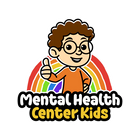Research from the Adolescent Brain Cognitive Development (ABCD) Study looked at how differences in the brain’s reward system are linked to signs of gaming addiction. The brain’s reward system is the part that makes us feel good when we do something enjoyable, like playing games.
The researchers analyzed data from over 6,000 participants, around 12 years old at the start of the study, over 3 years. Each year, participants took the Video Game Addiction Questionnaire (VGAQ). They also had brain scans using fMRI during a task that measured how their brains reacted to expecting and receiving rewards.
Based on the findings, teens with lower activity in a part of the brain called the caudate nucleus, which helps with reward anticipation and decision-making, were more likely to show signs of gaming addiction.
Specifically, when expecting big rewards, their caudate activity was lower, which was linked to higher gaming addiction scores over time.
The study helps us understand how unusual brain activity can lead to gaming problems. It may provide us with ideas for better ways to help teens.
Understanding the Research
The ABCD Study is a long-term research project that follows thousands of children in the U.S. to understand their brain development and behaviors as they grow into young adults.
The study is looking at various factors like how their brains respond to rewards or losses, and how this relates to behaviors like video game addiction. Researchers collect information through surveys and brain scans.
For this specific analysis, the researchers used data collected from kids aged 10 to 15 who had completed specific questionnaires about their video game habits and underwent brain scans during a task where they could win or lose money.
They then looked at the connection between brain activity, especially areas of the brain related to rewards and losses, and the children’s video game addiction scores over time. To make sure the results were reliable, they used a type of statistical analysis called Bayesian hierarchical modeling.
These were the Video Game Addiction Questionnaire (VGAQ) findings:
- Commonly reported behaviors included thinking about games often and using gaming as a way to forget their problems.
- Males, lower-income households, and individuals with ADHD or unsafe neighborhoods had higher VGAQ scores.
- 19.3% of participants reported no gaming addiction symptoms.
These were the findings for reward anticipation and gaming addiction:
- Lower activity in both sides of the caudate (a brain area) during the anticipation of big rewards was linked to higher gaming addiction scores (VGAQ).
- No significant findings were observed in other brain regions during reward anticipation.
Practical Strategies for Parents and Caregivers
Video games are a popular form of entertainment among adolescents, and many play an average of 13 hours per week. Although gaming can offer some cognitive benefits, excessive gaming can result in problematic behaviors.
Here are ways parents and caregivers can promote healthy gaming habits and minimize risks:
Help your child or teen find a balance between gaming and other rewarding activities
Hobbies like sports, music, or art are all great growth opportunities. Exposing them to these interests will minimize the risk of gaming becoming their only source of reward and enjoyment.
Here’s a worksheet featuring 101 enjoyable activities for them to choose from. They encourage fun without relying on excessive gaming or screen time.
Place clear limits on gaming time
This strategy will help create healthy boundaries. Keep in mind that this can be challenging at first, especially if your child is used to playing without restrictions. They might express frustration, which is normal.
The key is to stay calm and consistent. It’s also helpful to explain the reasoning behind these rules, like maintaining a balance between gaming, schoolwork, family time, and sleep.
Communicate openly
Talk to your child or teen about gaming, its benefits, and potential risks. You can start by acknowledging the positive aspects of gaming, such as improving problem-solving, teamwork, and hand-eye coordination.
Next, talk about the potential negative effects of gaming if it’s not managed properly, such as neglecting responsibilities and even gaming addiction. Teach them to spot some signs of unhealthy gaming, like feeling anxious or upset when they can’t play or using gaming as a way to avoid other problems.
Address any underlying issue
If your child or teen is diagnosed with ADHD or struggles with other challenges, consider seeking professional help. These factors may increase their risk of problematic gaming behaviors.
You may also take our free mental health screening tests to identify potential challenges. Each test takes only up to 10 minutes and can provide valuable insights to help you support your child.
The researchers suggest studying how the brain’s caudate nucleus changes with age and exploring ways to prevent gaming addiction, like improving family support.
Help your child or teen thrive with our Healthy Habits Posters and Stress Management Worksheets. These resources provide ideas to support them mentally and physically.





















































